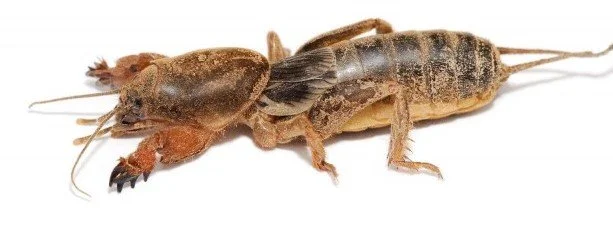Mole Cricket
The mole crickets compose family Gryllotalpidae, of thick-bodied insects about 3-5 centimetres (1.2-2.0 in) long, with large beady eyes and shovel-like forelimbs highly developed for burrowing and swimming. They can also fly: the adult mole cricket may fly as far as 8 kilometres (5.0 mi) during mating season, is active most of the year, and spends the winter in hibernation. Younger insects can have shorter wings, and their appearance varies by species, with some resembling grasshoppers or very large ants or dark-colored "termites"; when wings are short.
Mole crickets are omnivores, feeding on larvae, worms, roots, and grasses. Common predators of mole crickets include birds, rats, skunks, armadillos,raccoons and foxes. Mole crickets are relatively common, but because they are nocturnal and spend nearly all their lives underground in extensive tunnel systems, they are rarely seen. Mole crickets amplify their song by chirping in a burrow that they've carefully sculpted into the shape of a double exponential horn, which acts as a megaphone. [1] They inhabit agricultural fields, lawns and golf courses. They are present in every continent with the exception of Antarctica, and are commonly considered pests.

